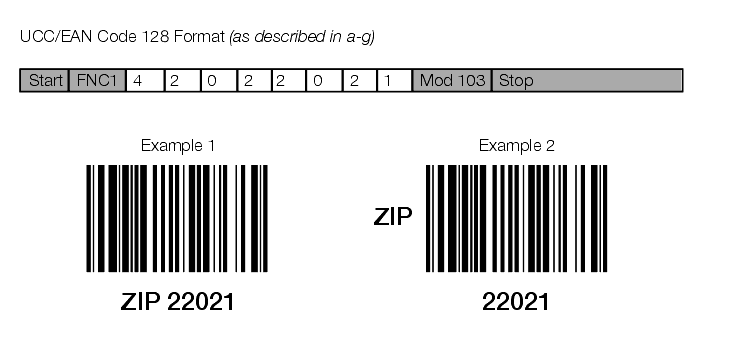

- Ucc 128 barcode x dimension and density manual#
- Ucc 128 barcode x dimension and density full#
- Ucc 128 barcode x dimension and density verification#
- Ucc 128 barcode x dimension and density code#

Density: smaller X dimensions will decode more slowly than larger X dimensions.A two or three layer stacked GS1 Databar will decode at a different rate than a many-layered PDF417.
Ucc 128 barcode x dimension and density code#
UPC will decode at a different rate than Code 128.QR Code will decode at a different rate than a Data Matrix Code.1D barcodes will decode faster than 2D symbols Scanners that make more attempts per second to decode a barcode will achieve higher rates of data capture, but there are other variables that make it difficult if not impossible to predict data capture rate, which is the other meaning of the term “scan rate.” Those variables include: **Scan rates for area images is not a simple number: it depends on field of view, resolution of the camera, scan lines per image and processing speed It sounds nit-picky but one relates to the other. He knew what he meant, but his question has more than one meaning depending upon who you ask: to a scanner manufacturer, “scan rate” means how many times (per second) the scanner attempts to read the barcode to a quality person, scan rate means how many times (per second) the scanner successfully captures the data in a barcode. What a great question.įirst we must be clear about what the printer is really asking regarding “scan rate”.
Ucc 128 barcode x dimension and density verification#
Familiar with the ISO specification for print quality, the printer wanted to know if there any way to extract or approximate scan rate from the verification report. Wanting to be responsive to his customer but also to be GS1 compliant, the printer was exploring the possibility of reducing the label size by truncating the two rows of the Databar symbol, and wanted to know how that would affect scan rate. The customer wanted the printer to use a smaller X dimension to reduce the size and cost of the label. The GS1 Databar symbols the printer was producing had an 8 mil X dimension which is necessary to comply with the GS1 guidelines. The Code 128 stop character has the same number of spaces as a regular Code 128 character, but it has one extra bar.Recently we were asked to weigh in on an ongoing conversation between a label printer and their customer. Two-Dimensional Symbology is CC-A or CC-B The code set identifier used depends on what was the last code set used in the barcode and which symbology is used for the two-dimensional part. This serves as a linkage flag that alerts the scanner to the presence of the two-dimensional component. When Code 128 is used as the one-dimensional component of a composite barcode the last character before the check character (see below) must also be a code set identifier. The one that will be used for a given barcode depends on what characters need to be encoded in that portion of the barcode.Ĭode 128 start characters have the same number of bars and spaces (3 each) as regular Code 128 characters. Multiple segments with different code sets can be used in a single barcode.Ĭode 128 actually has three different start characters: the start character for Code A, the start character for Code B, and the start character for Code C.
Ucc 128 barcode x dimension and density manual#
It is also possible to select the manual mode where the character code (^A, ^B, ^C, or ^S) for the different modes must be entered by the user as the first character of the segment of barcode data using that code set. Therefore, 100 of the 102 characters in code set C are used to represent the 100 two-character combinations from 00 through 99.īarTender allows selection of any of these code sets or an auto mode that will determine the best mode for the data entered. This character set is numeric-only, but any one character actually represents two digits.
Ucc 128 barcode x dimension and density full#
The three character code sets can be summarized as follows:Ĭode A: The Full ASCII set, except for the 26 lower case letters.Ĭode B: The Full ASCII set, except for the 26 "control" characters.Ĭode C: Double-density numeric. Because it is possible to use any combination of the three character sets in a single barcode, Code 128 gives you the greatest possible character density when encoding data into barcode. However, once a Code 128 barcode is started, it is possible to switch between the different character sets in the middle of the barcode. The default character set in use for any Code 128 barcode is determined by the start character. This is possible because Code 128 actually contains three different sets of 102 characters. Although Code 128 can encode all 128 lower ASCII characters, the character set itself contains only 102 characters.


 0 kommentar(er)
0 kommentar(er)
